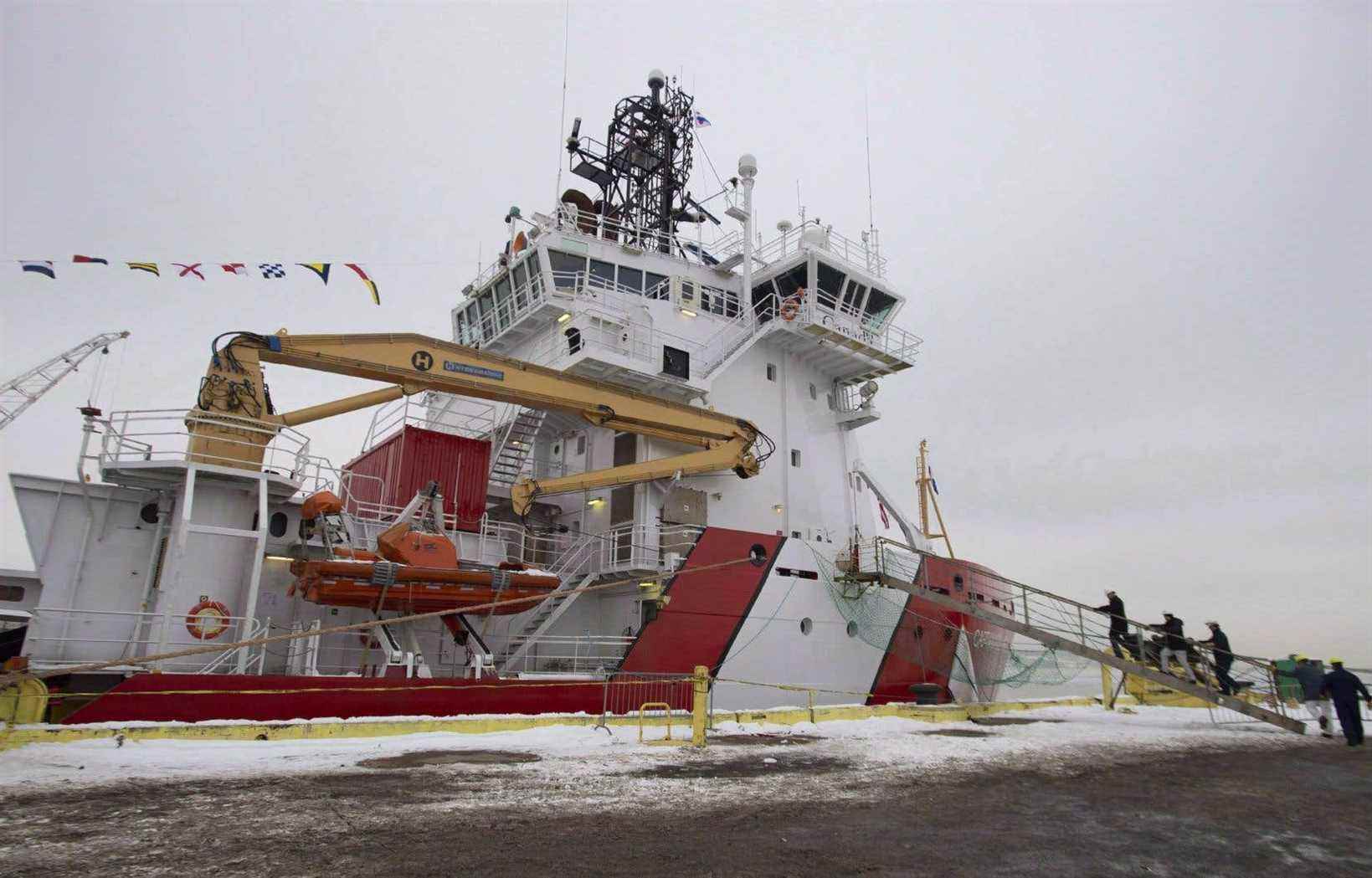The federal government’s plans to build new ships for the Canadian Navy and the Coast Guard are becoming increasingly expensive.
In a new report released Thursday, the Parliamentary Budget Officer (PBO), Yves-Giroux, estimates that Ottawa’s decision to build two new polar icebreakers for the Coast Guard would cost $ 7.25 billion. This represents a dramatic increase from the government’s most recent estimate, released in 2013, which was $ 1.3 billion for a single icebreaker at the time.
Part of the explosion in costs can obviously be linked to the decision to build two of these “heavy icebreakers” instead of just one. A few months before the 2021 federal election last May, the Liberal government made the surprise announcement to add a second icebreaker to its naval acquisition plans.
Mr. Giroux told reporters Thursday that plans to build the ships at two separate shipyards – Davie, in Levis, and Seaspan, in Vancouver – would add between $ 600 million and $ 800 million to the overall cost.
“In shipbuilding projects, there are economies of scale and learning factors that would be generated if the contract was concluded with the same shipyard,” explained Mr. Giroux. Splitting the contract, he argued, “will not lead to these natural improvements in learning.”
To explain the increase in costs, Mr. Giroux also underlines the delays throughout the project.
The government has never provided its own cost estimate for these two polar icebreakers. The decision to add a second heavy icebreaker and to divide the work between Vancouver and Lévis was seen by some analysts as a way for the Liberals to improve their electoral chances in these two politically important regions.
Will Davie rank?
The Liberal government argued that splitting the contract would ensure faster delivery of ships, and Mr. Giroux’s report suggests the first icebreaker could be ready in 2030 and the second the following year.
However, that depends on a start of work in Vancouver by 2023-2024 for this potentially important contract, given that the Seaspan yard has often struggled to meet deadlines in other projects.
For example, new Navy support ships are already years behind schedule – and billions of dollars in cost overruns. A new offshore science vessel for the Coast Guard, which was originally expected to cost around $ 100 million, would now cost nearly $ 1 billion.
Davie, meanwhile, has yet to be officially accepted as a “third shipyard,” along with Seaspan and Irving of Halifax in the federal government’s strategy for building large ships. And this, despite the fact that the Quebec shipyard, which has organized numerous public relations and lobbying campaigns over the years to obtain federal contracts, established itself in December 2019 as the only prequalified bidder to join the national procurement strategy.
The government said work was underway to ensure Davie can meet its demands, but has otherwise offered no timeline, leaving the Lévis shipyard in limbo.
Mr. Giroux estimates that a one-year delay in building the two ships would add $ 235 million to the overall bill, while a two-year delay would result in an increase of $ 472 million.
The Conservative government of Stephen Harper had unveiled its plans to build a new heavy icebreaker, called at the time the “John-Diefenbaker”, for 700 million dollars in 2008. The Diefenbaker was intended to replace the flagship of the Coast Guard, the Louis-St-Laurent, who is 65 years old.
The Harper government revised its estimate to $ 1.3 billion in 2013, when the Diefenbaker contract was awarded to Seaspan, along with four other small Coast Guard vessels and two Navy support vessels.
When Seaspan experienced delivery problems on these ships, partly because of problems at the shipyard, but also because of mismanagement and planning in Ottawa, the Liberals quietly pulled the Diefenbaker from the logbook. Seaspan orders in 2019.
Other cost overruns
Mr. Giroux’s report on polar icebreakers is only the most recent to show skyrocketing costs in Ottawa’s naval strategy, first launched in 2010 to precisely keep these costs under control and maximize costs. benefits to the Canadian economy.
One of the most recent PBO reports estimated the cost of 15 new ships to the Canadian Navy at over $ 77 billion, which is $ 17 billion more than the government’s estimate and three times the original budget of $ 26 billion. of dollars.
For Mr. Giroux, it has become clear that the government’s desire to build ships in Canada rather than abroad comes with a “significant premium” in terms of cost. Whether this bonus is worth it is a political discussion that needs to take place, he said.
“This is an eminently political question, because there are regional advantages that must be taken into account, and also the question of national security when it comes to maintaining the capacity to build this type of ships here”, did he declare.
